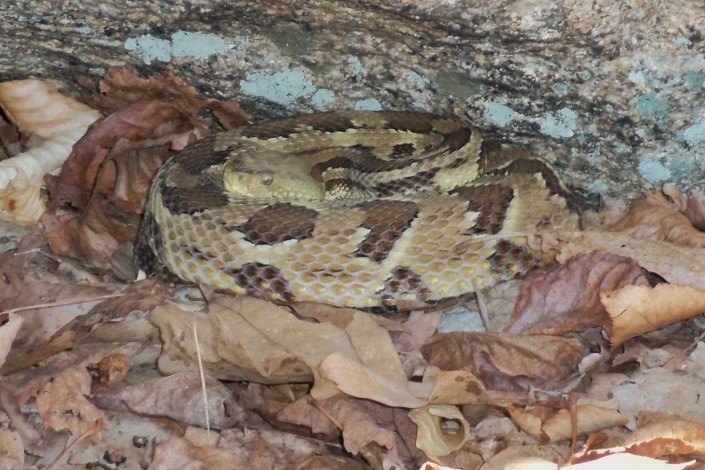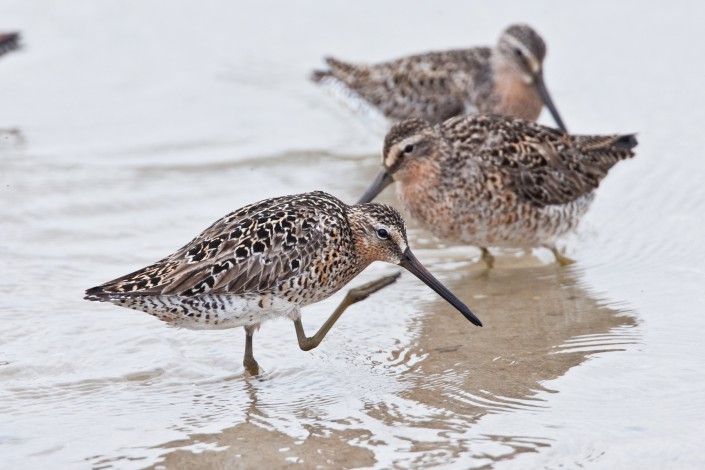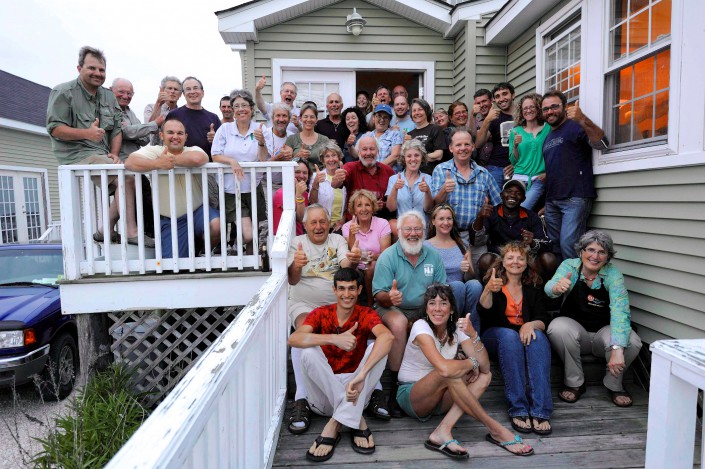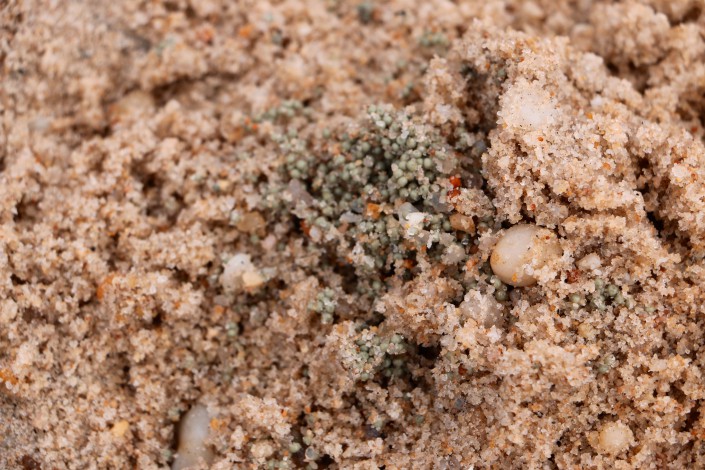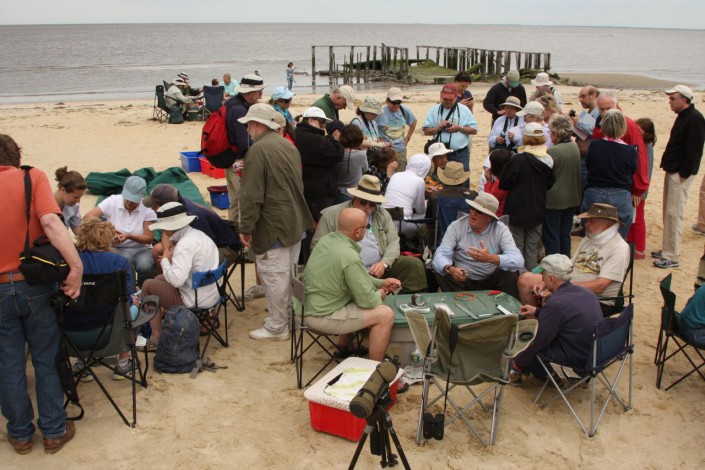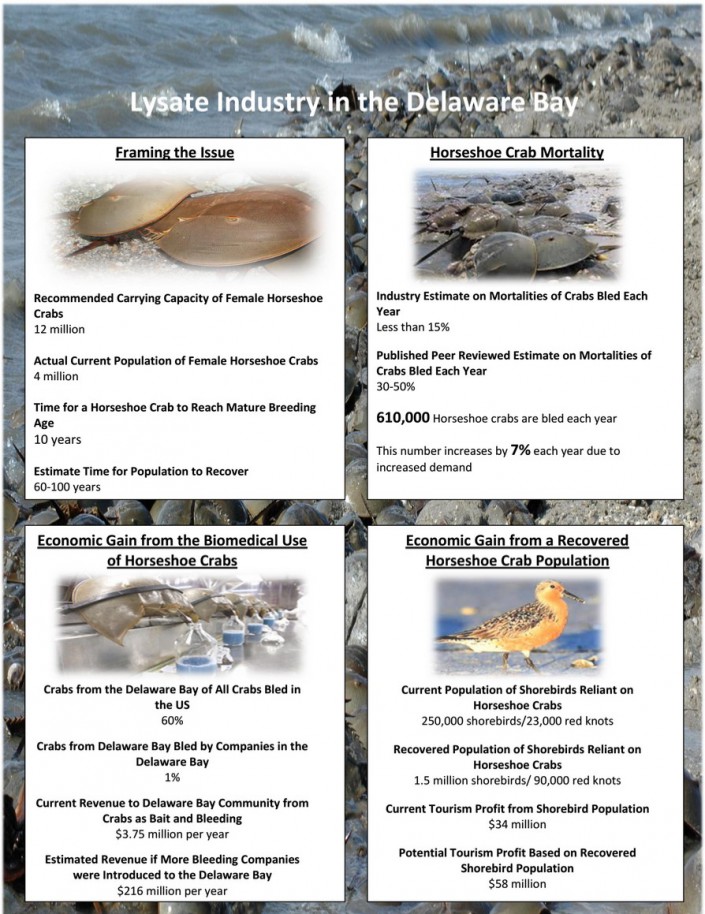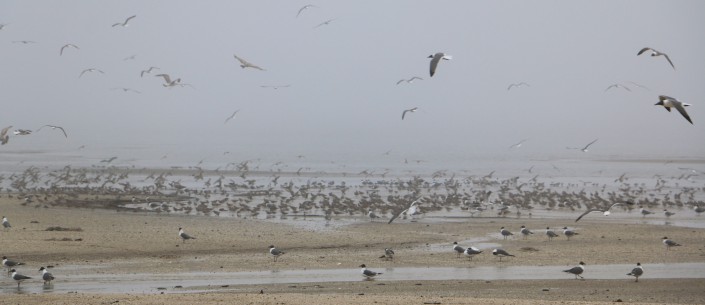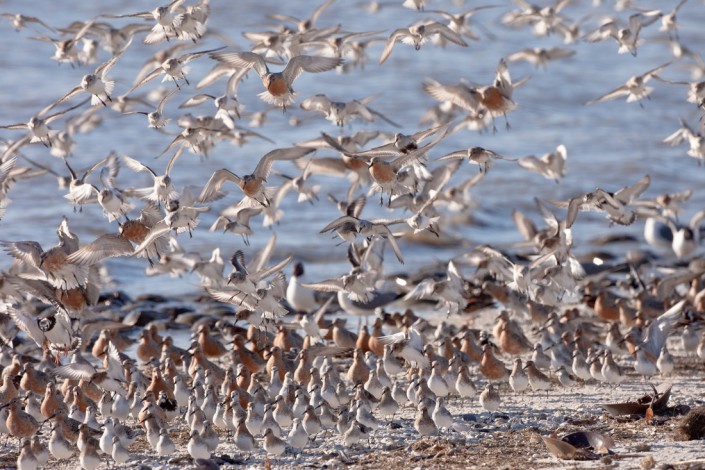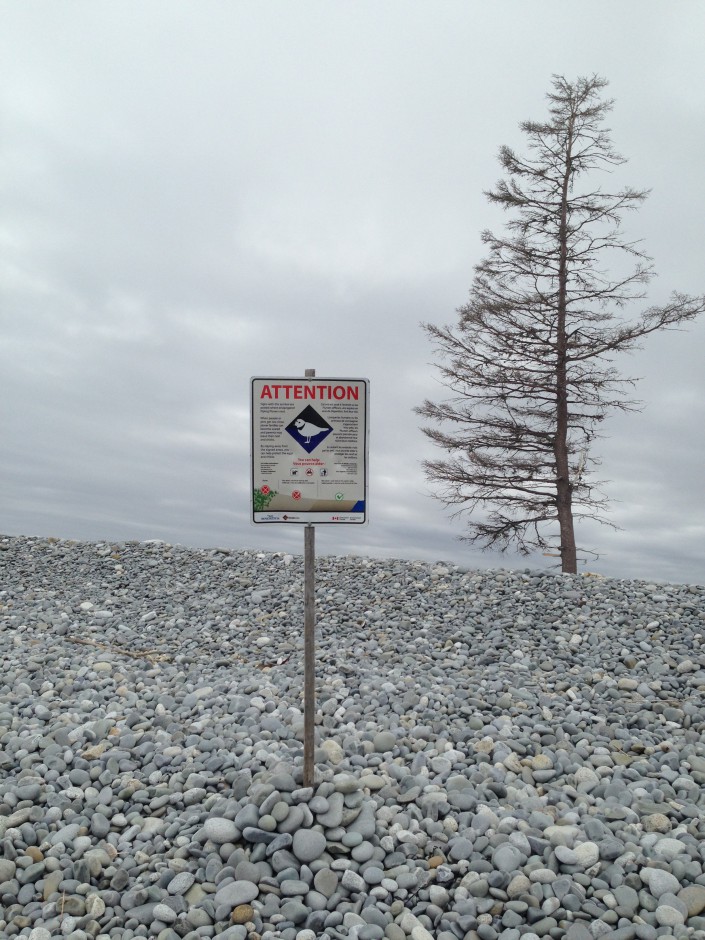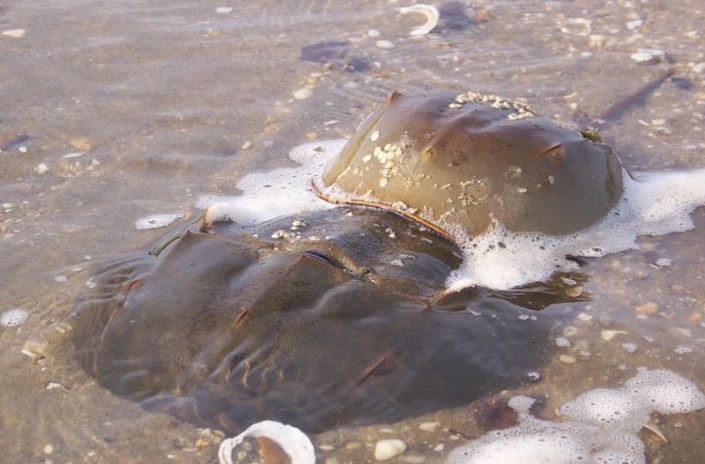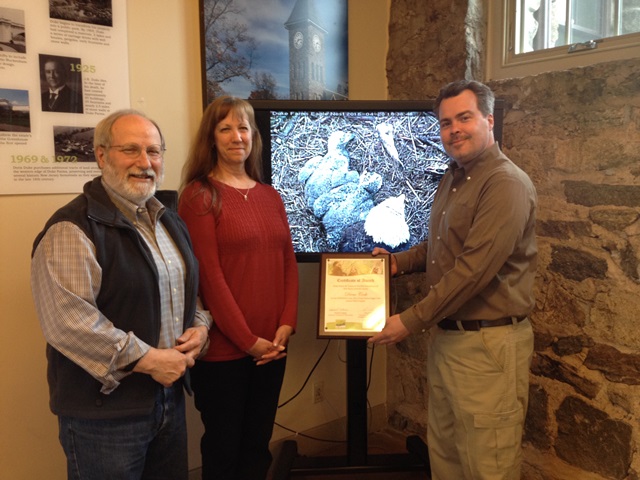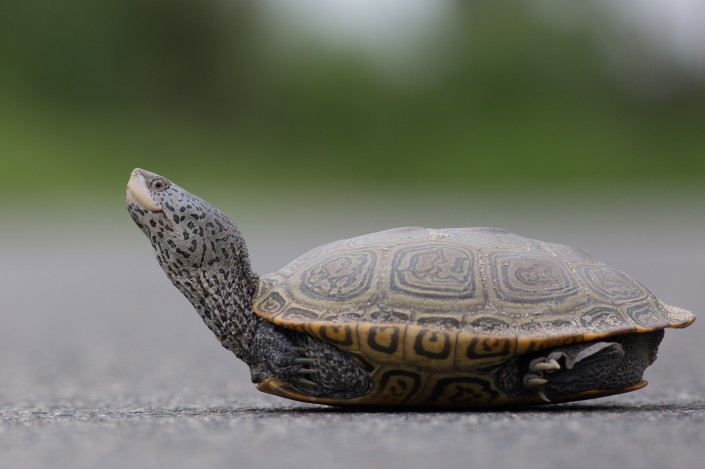2015 Horseshoe Crab Spawn and Shorebird Migration on Delaware Bay
An Update on This Season’s Horseshoe Crab Spawn and Shorebird Migration, Ten Days In
By: Dr. Larry Niles, LJ Niles Associates LLC
Thousands of shorebirds now fill Delaware Bay’s beaches and marshes in a determined effort to regain lost reserves with free-for-the-taking fatty eggs of the horseshoe crab. The crab spawn began ten days ago and has gained momentum over the last week as the volume of eggs grows like a well-funded savings account. The eggs surface as each new female crab digs up egg clusters laid by other crabs or as wind-driven waves pound the always-fluid sandy beaches. At least 8,000 red knots slowly get fat on the eggs scattered on New Jersey’s Delaware Bay beaches.
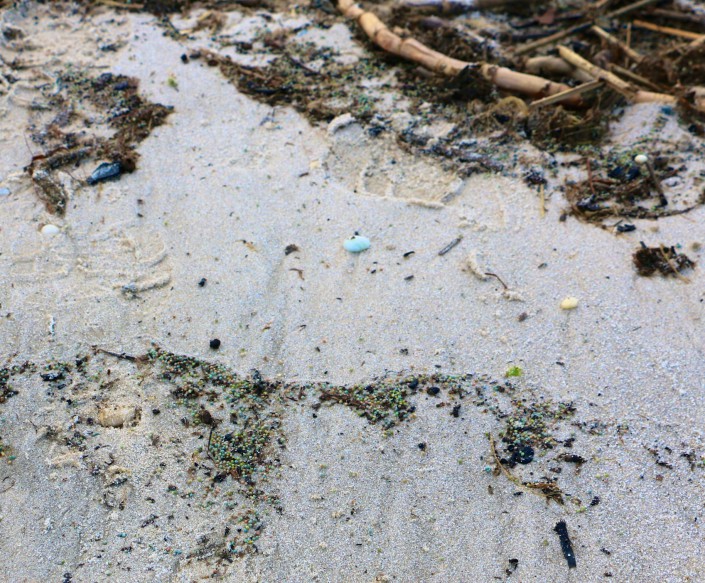
Both crabs and birds are the beneficiaries of the increasing number of beaches that are highly suitable for egg-laying. In October, 2012, Hurricane Sandy ravaged two-thirds of New Jersey’s best crab-spawning beaches, its strong westerly winds lifting sand and spreading it far from the sea’s edge. Left behind was a jagged sod bank, completely unsuitable for horseshoe crab breeding. The mucky sod starves eggs of oxygen or gasses them with hydrogen sulfide, the by-product of decaying mud.
The American Littoral Society, Conserve Wildlife Foundation of New Jersey, the U.S. Fish and Wildlife Service and the National Fish and Wildlife Foundation came to the rescue, restoring many of these beaches to a condition superior to that before Sandy. The restoration team even repaired damages that predated Sandy — beaches with tons of rubble that entrapped crabs in nasty concrete, killing them by the thousands. Now beaches like Thompson’s Beach and Fortescue Beach join the growing number of delicate sandy strands that provide excellent spawning habitat.

This week, eggs can be found in many places on the New Jersey side of Delaware Bay, and the birds have the freedom to move to those that best suit them. Earlier this month, strong northwest winds drove red knots from the Reeds Beach area to other, more northerly, beaches that saw good crab spawning — beaches that also provide shelter from the winds. Now that the wind and sea have calmed, the birds have returned to the Reeds Beach area, less than 20 miles away, and have resumed gorging on the plentiful eggs that built up in their absence.
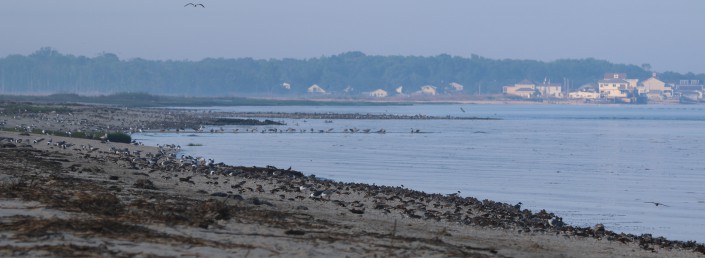
If one were to look for any cloud on the Delaware Bay shorebird horizon, it would lie in the lack of any evidence of horseshoe crab recovery. The current, reduced, population of crabs spawned eggs in great numbers early this May because of a spike in the water temperature, a consequence of unusually warm weather. So far the promise of this early spawn is holding, and crabs continue to spawn in good numbers. But will it hold until the end of May?

If not, the readers of this blog will witness the outcome. The graph below, developed by long-time team-member Dick Veitch tells the story of a past egg failure. In the early 2000’s, although the population of shorebirds had not yet declined to its current number, the crab population had already fallen to its current number, crushed by the onslaught of a poorly regulated fishing industry. In those years, all the horseshoe crabs that could spawn had finished by the third week of May and egg densities on the bay plummeted. The birds crammed into the few beaches with eggs like Mispillion Harbor, Delaware, so densely that the beach reeked of off-gassing urinary ammonia.
But the number of eggs there was not sufficient to feed the still-large shorebird populations and birds failed to reach a weight – about 180g for red knots — suitable for their journey to the Arctic and subsequent breeding. Where once 80% reached the “good” weight, only 5% did in 2003 (see the second graph).

The percentage has improved thankfully, but only because the number of shorebirds have fallen over the last 10 years, bringing a balance of sorts. Hopefully, with the new beaches, the new protection afforded by the red knot listing and the growing number of volunteers taking part in conservation of the crab and birds, this kind of disaster is behind us.
We shall see.
Learn more:
- Delaware Bay Restoration – RestoreNJBayshore.org
- Conserve Wildlife Foundation’s Delaware Bay Shorebird Project
Dr. Larry Niles has led efforts to protect red knots and horseshoe crabs for over 30 years.
